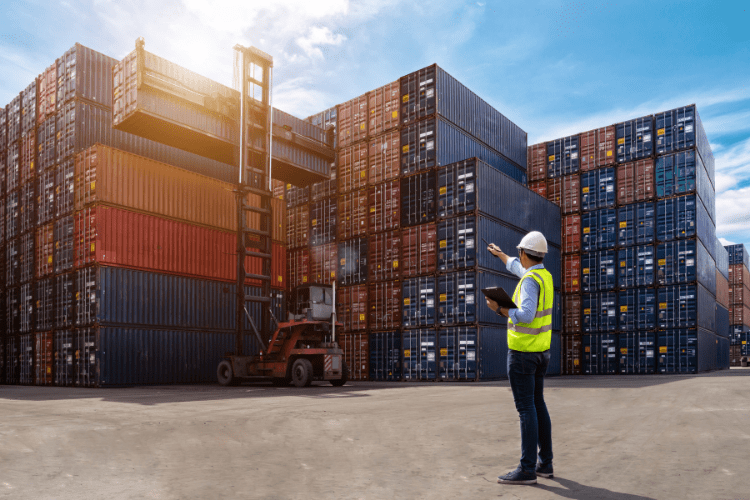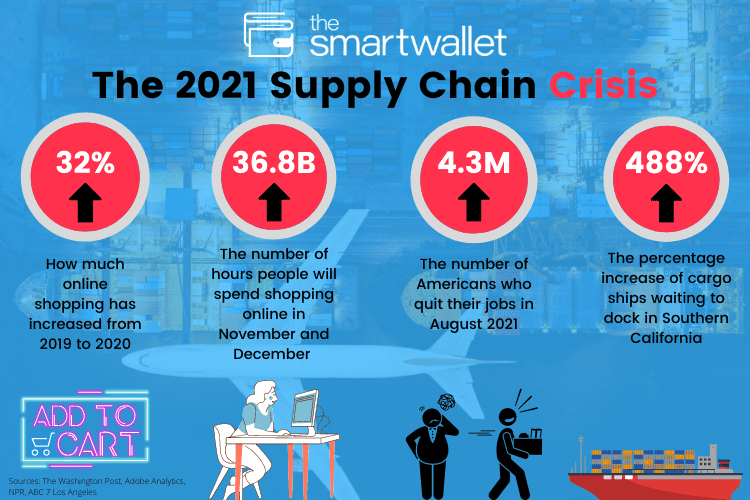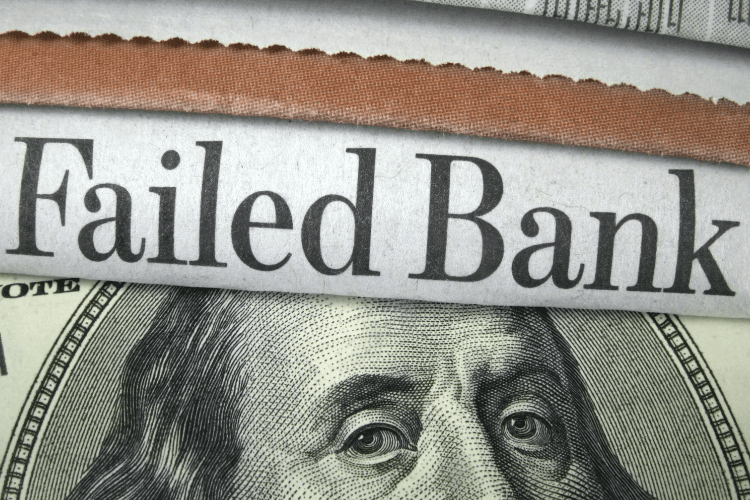Black Friday 2021: The Supply Chain Crisis And Your Wallet

 Disclosure: We’re letting you know that this post contains sponsored links which The Smart Wallet receives compensation for, which may impact their order of appearance. This site doesn’t include all available offers.
Disclosure: We’re letting you know that this post contains sponsored links which The Smart Wallet receives compensation for, which may impact their order of appearance. This site doesn’t include all available offers.
Black Friday sales and Cyber Monday deals have already started and revenue from both online and in-person sales are expected to break records. And of course, we’ll all be looking for the lowest price and best deal. According to the National Federation of Retailers, overall holiday shopping sales in November and December will grow between 8.5% and 10.5% over 2020 to between $843.4 billion and $859 billion.
But what’s all this talk about a supply chain crisis we’ve all been hearing about? While the COVID-19 pandemic has been raging for nearly 2 years now, the ripple effects of global supply chain issues in manufacturing, shipping, and the retail sector are being felt this holiday season and yes, we’d even say there’s a supply chain meltdown. Let’s break down the reasons why this is all happening and what it could mean for your wallet this holiday season.
Increased Demand for Goods via Online Shopping
One of the causes of this shortage of goods? Us!
As consumers spent more time than ever before at home these past two years, shopping online became a lifestyle. The Washington Post states that online retail sales surpassed $791 billion in 2020, up 32% from 2019. And get this: the Adobe Analytics Holiday Shopping Forecast report estimates individuals will spend an average of 12 hours online shopping in November and December 2021. Cumulatively, that comes out to 36.8 billion hours or 414,000 years of shopping over the two-month season; how crazy is that!
The sheer volume of online orders has led to a slew of supply chain problems, most notably the increased cost and lack of natural resources, the scarcity of shipping containers to transport goods from one continent to another, and most importantly a very real labor shortage. The shopping momentum has not stopped and has ultimately resulted in a backlog of orders that haven’t yet been filled. In many cases, there just isn’t any more of a product to be shipped out!
Backups in the U.S. Shipping Ports
Shipping ports in Los Angeles and Long Beach, California receive 40% of all cargo containers that enter the U.S. Before the pandemic, these ports only saw a daily maximum of 17 cargo ships waiting to dock to unload all their goods from abroad. Now, a record 100 ships are standing by, according to ABC 7 Los Angeles. This has created a massive backlog of items, resulting in longer wait times for online orders and empty store shelves.
This backlog is attributed to the massive spike in online shopping orders as well as a labor shortage within all of the sectors of the economy that make up the supply chain. Consequently, the high demand for shipping containers has led to higher costs for the containers themselves; retailers are having an increasingly difficult time getting their hands on more containers to ship the seemingly endless number of orders. So that new hair straightener you bought on Amazon? It might very well be sitting in a shipping container off the Southern California coast.
This video from BBC News breaks down why and how we’re currently going through an “everything shortage:”
Lockdowns
As factories and offices have kept their employees at home due to COVID concerns or because of global lockdowns, it has taken more time to source and harvest raw materials for production, more time to produce goods, and more time to ship goods. All the while, online orders have exploded. So what’s happened? Well, demand has increased exponentially while supply has decreased: we’ll all need to spend more $$$ to get the gifts we want this year.
The Great Resignation
As a result of the COVID pandemic, millions of Americans who were stuck at home for the past two years have re-evaluated what it is they really want out of life. Because of that, coupled with strong confidence in the job market, it’s no surprise that a record 4.3 million Americans quit their jobs in August 2021 alone, says NPR. This has left the retail sector of the economy in dire need of workers in advance of the holiday shopping season. Heck, Amazon has even gone as far as offering people up to a $3,000 sign on bonus to start working in their warehouses ahead of the holiday shopping rush.
Check out this infographic which sums up the challenges of the 2021 Supply Chain Crisis:

The Bottom Line
There will still be Black Friday deals and Cyber Monday sales this year but expect to pay more than in years past as retailers reduce sales and deals. In other words, what you got 50% off on last year might only be 30-40% off this time around. Shipping delays, a lack of natural resources to produce goods, as well as labor shortages across the entire supply chain will all contribute to a lack of items in stock online as well as on store shelves.
Whether online or in-person, buying gifts will likely take more time and cost more money this year. We recommend starting your shopping as early as possible, especially if there are specific items you’re sure you’re looking to buy!
Ready to get started on your holiday shopping right now? Read The 20 Hottest Items To Buy on Amazon For the 2021 Holiday Season










